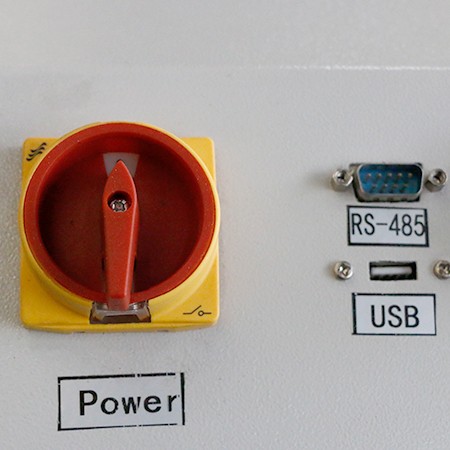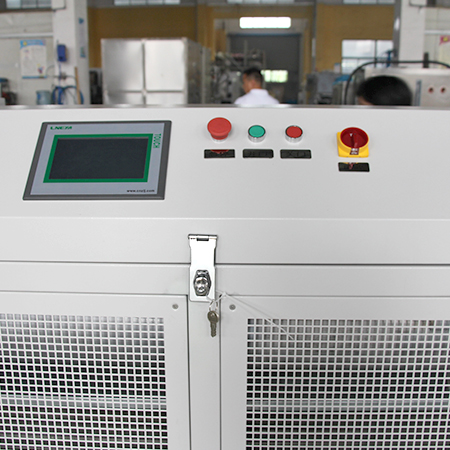What Is Chiller Voltage And How To Select

- How to Upgrade an Old Chiller to Improve Efficiency
- Chiller Tanks Comparison Expansion Tank vs Buffer Tank
- Expansion Tanks in Semiconductor Chillers
- How Explosion-Proof Chillers Work Principles and Design
- Agosto 2025
- Luglio 2025
- Giugno 2025
- Maggio 2025
- Marzo 2025
- Febbraio 2025
- Gennaio 2025
- Dicembre 2024
- Novembre 2024
- Ottobre 2024
- Settembre 2024
- Agosto 2024
- Luglio 2024
- Giugno 2024
- Maggio 2024
- Aprile 2024
- Marzo 2024
- Febbraio 2024
- Settembre 2023
- Luglio 2023
- Giugno 2023
- Maggio 2023
- Gennaio 2023
refrigeratore raffreddato ad aria refrigeratore refrigeratori Congelatore a freddo refrigeratore di raffreddamento circolatore di raffreddamento e riscaldamento sistema di raffreddamento e riscaldamento cooling water chiller Double-Layer Glass Reactor sistema di controllo dinamico della temperatura Controllo della temperatura del liquido fluorurato congelatore refrigeratore a gas circolatore di riscaldamento industrial chiller industrial cooling industrial freezer frigorifero industriale jacket reactor refrigeratore a liquido refrigeratore a bassa temperatura news pharmaceutical chiller process chiller reactor chiller reactor cooling reactor cooling heating riscaldamento del reattore raffreddamento reactor system circolatore refrigerato refrigeration chiller refrigeratore a vite refrigeratore per semiconduttori refrigeratore di prova per semiconduttori sundi tcu controllo della temperatura camera di prova termostato refrigeratore a bassissima temperatura refrigeratore di prova per veicoli refrigeratore d'acqua refrigeratore raffreddato ad acqua wtd
In industrial production, refrigeratori are key temperature control equipment. Many buyers focus on cooling capacity, temperature accuracy, and brand. But they often overlook a crucial point — voltage. Some may think, “Isn’t it just plug and play?” Not really. If the voltage doesn’t match, the chiller may fail to start. It can also cause compressor overload, damage the control system, and even risk the whole production line’s safety. So, what is voltage? And how do you pick the right chiller voltage?
What is chiller voltage?
Chiller voltage is the level of electric power it needs to run properly. It affects whether the chiller can start and run smoothly. It also impacts the safety of electrical parts and the chiller’s lifespan. Think of it like blood pressure for a person — you need the right range to stay healthy. Too low voltage is like lack of oxygen, making the compressor hard to start and reducing cooling efficiency. Too high voltage is like over-pressurizing the heart, causing parts to overheat, insulation to wear out, and control boards to burn out.

Common types of chiller voltage
The common chiller voltages are single-phase AC, three-phase AC, and custom voltages.
Single-phase AC
Single-phase power is typical for small chillers. These chillers serve labs, medical devices, or light industrial uses. In North America, they often run on 110V or 120V/60Hz. In China, it’s usually 220V/50Hz. Single-phase chillers are easy to connect. Just plug into standard power outlets. They work well for low-power needs.
But single-phase power can struggle under long, heavy loads. Voltage can fluctuate and affect cooling stability. Many labs start with single-phase chillers but switch to three-phase as their heat load grows.
Three-phase AC
Three-phase power is the main supply for medium to large industrial chillers. In China, 380V/50Hz is common. Europe mostly uses 400V/50Hz. North America often uses 480V/60Hz. Three-phase power is more stable and can run big compressors. It fits long, heavy-duty cooling jobs well. That’s why pharmaceutical and chemical plants prefer it.
Installing three-phase chillers requires skilled electricians. You also need enough power capacity at the site.
Custom Voltage
Some chillers use custom voltages for exports or global plants. For example, parts of the US need 208V/60Hz. Some industries or regions use 415V, 440V, or even 575V. Custom voltage matches local power standards exactly. This reduces energy loss from transformers and keeps the chiller running well.
But custom voltage chillers usually take longer to deliver and cost more. If you move the equipment to a place with a different voltage later, you might have to change or upgrade the electrical system.
| Region | Common Single-phase Voltage | Common Three-phase Voltage |
| North America | 120V / 60Hz | 208V, 230V, 460V |
| Europe/Asia | 220-240V / 50Hz | 380V, 400V, 415V |
| Cina | 220V / 50Hz | 380V / 50Hz |
How Does Voltage Affect a Chiller?
Starting the Equipment
If the voltage doesn’t match the chiller’s rated voltage, the unit may not start at all. For example, a 380V three-phase chiller won’t start if you plug it into a single-phase 220V power supply. On the other hand, if a 220V chiller is connected to 380V, it can instantly burn out electrical parts and even cause an electrical fire.

Running Stability
Refrigeratori industriali are sensitive to voltage changes during heavy loads. Low voltage makes the compressor hard to start and can cause frequent overload trips, which leads to overheating and insulation damage over time. High voltage speeds up wear and tear on motors and control systems, shortening the chiller’s life.
Cooling Performance
The speed of compressors and pumps depends closely on voltage. If voltage is below the rated level, cooling power drops, temperatures take longer to recover, and the chiller might fail to hold set temperatures. High voltage might temporarily increase speeds, but it raises energy use and causes faster mechanical wear.
Safety
High voltage, phase loss, or wrong phase sequence can cause electrical faults inside the chiller. This can lead to short circuits, equipment damage, or fires. Most chillers have built-in protections like over-voltage, under-voltage, phase loss, and phase sequence alarms. But these safety features only reduce risks—they don’t replace proper voltage matching.
How to Choose the Right Voltage?
Choosing the right chiller voltage means matching your site’s power supply while meeting the chiller’s needs.
Site Power Supply
If your factory or lab only has single-phase 120V, picking a 120V single-phase chiller is the easiest choice. Many small labs, medical facilities, or light industrial shops fit this case. Buying a three-phase 230V chiller won’t work without extra transformers—and that’s costly.
Chiller Power
The bigger the chiller, the more power it needs. Generally, chillers under 5kW can use single-phase power. But most industrial chillers above 10kW require three-phase power to run compressors and pumps reliably.


Power Standards
Different countries have different industrial voltage standards. For example, the US often uses three-phase 208V or 460V, Japan has a 200V system, and Europe mostly uses three-phase 400V. For exports or multinational sites, it’s best to choose chiller manufacturers (like LNEYA) who support custom voltages to avoid power mismatch during installation.
Future Needs
Many companies buy a chiller for a small device at first. Later, when they expand or change processes, or add bigger reactors, the power and voltage may not be enough. Then they must buy new chillers. If that might happen, it’s smarter to start with a three-phase chiller that supports higher power.
Conclusion
Whether you need single-phase or three-phase chillers, LNEYA offers professional solutions. We cover common voltages and can customize voltage specs based on your power supply and local standards. This ensures your equipment works right out of the box and runs steadily. Choose LNEYA to make your cooling system more reliable.
FAQ
Related chillers
CONTATTO
TEL:
EMAIL:
WeChat & WhatsApp:

Wechat QR

Hai domande o hai bisogno di un preventivo? Compila il modulo sottostante e il nostro team ti risponderà entro 24 ore.
 Refrigeratori industriali LNEYA Produttore Fornitore
Refrigeratori industriali LNEYA Produttore Fornitore
















